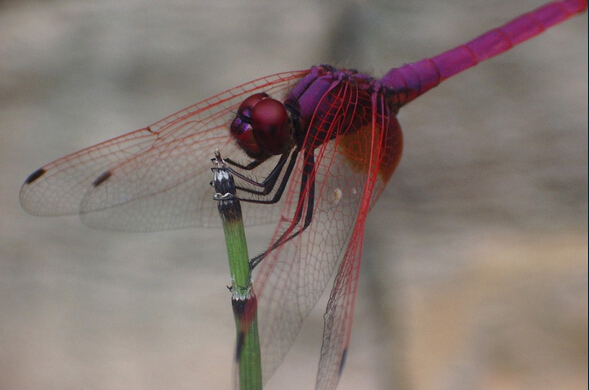(单词翻译:单击)
Once upon a time, hundreds of millions of years ago, many insects were much larger than they are today.
很久以前,大约几亿年前,许多昆虫的体型要比现在的昆虫大得多。
Scientists have found fossilized remains of dragonflies with wingspans several feet in diameter.
科学家已经发现翼展直径长达几英尺的蜻蜓化石。
Other insects were equally monstrous due largely to the abundance of oxygen in the atmosphere.
其它昆虫的体型也不可小觑,究其原因是因为当时的大气中氧气含量充足所致。

Oxygen is the fuel that powers insects’ flight muscles. So the more oxygen in the atmosphere, the larger insects tend to grow.
氧气是昆虫锻炼飞行肌的动力来源。因此,大气中的氧气越充足,昆虫的体型就越庞大。
Hundreds of millions of years ago, oxygen made up around 30% of the earth’s atmosphere, compared to about 20% today.
几亿年前,地球大气的含氧量高达30%,如今大气的含氧量只有20%。
But around 150 million years ago, even though oxygen saturated the atmosphere, giant insects began to disappear.
大约一亿五千万年前,虽然大气中的含氧量仍然趋于饱和,但巨型昆虫还是相继灭绝。
Why? Scientists suspect it was due mainly to the evolution of insect-eating birds.
究竟是何原因?科学家怀疑主要原因可能是食虫鸟类的进化所致的。
Bird like creatures existed earlier, but their ability to fly and maneuver was limited.
现在的鸟类与远古时期的鸟类相差无几,只是当时鸟类的飞行能力和控制力十分有限。
Their offspring eventually evolved smaller tails, specialized wing bones, and larger breast bones.
它们的后代最终进化成尾巴更小,胸骨更大,翼骨更加发达的鸟类。


